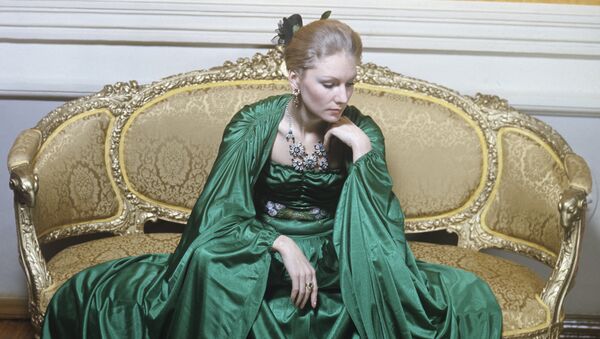In an interview with Sputnik’s Anna Kocharova, Maimu Berg said that back in the 1980s, they began to actively engage in exchange programs, travelling to such people’s democracies as the GDR and the then Czechoslovakia, as well as welcoming fellow journalists and designers in Estonia. “One of my other duties was to answer our readers’ letters”, Maimu remarked, adding that many asked advice on how to get rid of excessive weight, prompting her to come up with a template answer to send the ladies in response to their requests.
She went on to say that many from all around the vast country volunteered to be photo-models for “Silhouette” and even sent naked pictures to this end. “This ran counter to the moral principles of the time, and we, certainly, did not publish those snapshots”, Maimu noted.
“Silhouette” Up & Working
We usually took pictures of the models from our fashion house, but sometimes, our employees spotted beautiful women right in the street and offered them a photoshoot, which was highly prestigious at the time.
“Silhouette” shot to fame in the Soviet Union, thanks in many ways to the fact that they had access to fresh fashion magazine issues, largely from Finland and Sweden, according to Berg. “There was also Vogue”, Berg remarked, adding that in many cases, these magazines were privately brought into Estonia and then sold to special book stores that “Silhouette” had an agreement with and was thus the first to purchase the much-desired glossy pages.
Berg recalled the most pressing technical issue at the editorial office – in light of the poor quality of press, some of the photoshoots had to be edited manually and some images were fully drawn by hand, which signalled for many users that the models were off the rage, as compared to those in print.
“If something special hit runways, the readers wrote to us requesting sewing patterns. Don’t have even a vaguest idea, where they learnt this from. For instance, Estonian women fell in love with side caps at some point. We made the pattern and the whole of Tallinn put the headgear on”, Berg said.
Ideology Issue
Despite a number of technical issues, the magazine was “the most independent one in Estonia, and nobody controlled our work”, Berg pointed out. However, the point didn’t stop the editorial from receiving some critical remarks over some of their “ideologically incorrect” models. One picture featured a Maltese cross as a decoration of an item, and this caused a backlash and the editor-in-chief was summoned to the Central Party Committee, Berg recalled.
“Or, one of our designers made a jewellery item which looked like a glass eye. A model was photographed with the pendant taken close to her eye; and the chairman of the Estonian Soviet Republic board happened to have an implanted glass eye at the time”, the writer went on, adding that in wake of the awkward incident, “there was a showdown for the management again”.
READ MORE: First Filipina in VS Fashion History Opposes Fans Billing Her 'Eurocentric'


